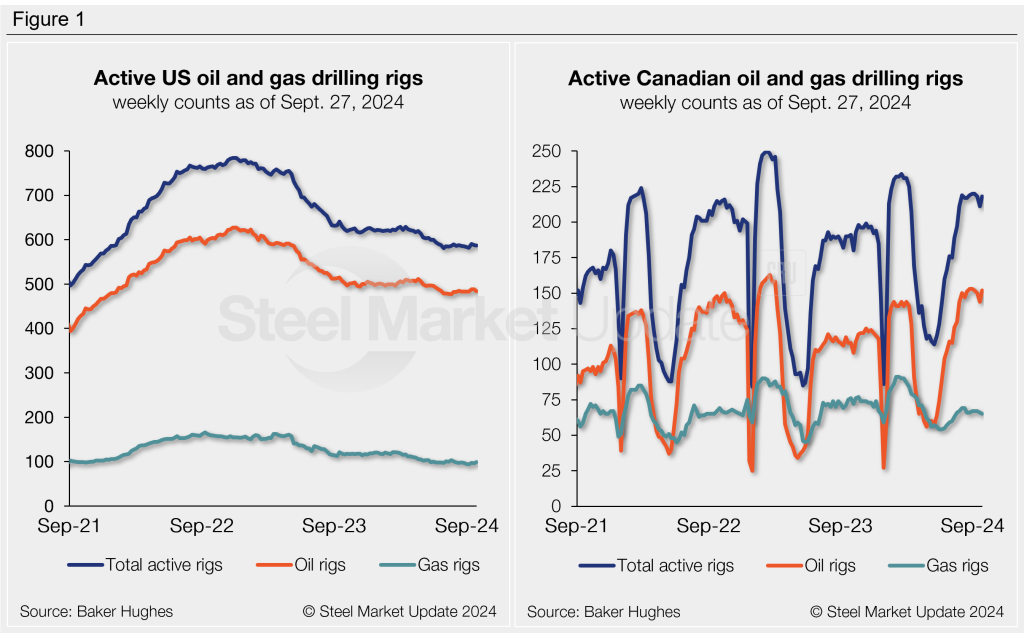Analysis
September 27, 2024
Active rig counts edge lower in US, rise in Canada
Written by Brett Linton
Drilling activity eased in the US last week, while Canadian counts increased, according to the latest data release from Baker Hughes.
US rig counts have been in this range since June, holding near multi-year lows. Canadian counts remain strong, just below the six-month high witnessed earlier this month.
US rigs
Through Sept. 27, there were 587 drilling rigs operating in the US, one fewer than the week prior. Oil rig counts were down four to 484, gas rigs rose by three to 99, and miscellaneous rigs were unchanged at four.
Compared to the same week las year, there were 36 less active US rigs, with 18 fewer oil rigs, 17 fewer gas rigs, and one fewer miscellaneous rig.
Canada rigs
There were 218 active Canadian drilling rigs as of last week, seven more than the prior week. Oil rigs rose by eight to 152, gas rigs eased by one to 65, and miscellaneous rigs were unchanged at one.
There are currently 27 more Canadian rigs in operation than levels one year ago, with 37 more oil rigs, 11 fewer gas rigs, and one more miscellaneous rig.

International rig count
The international rig count is a monthly figure updated at the beginning of each month. The total number of active rigs for the month of August fell to 931, three less than the July count and 21 fewer than levels one year prior.

The Baker Hughes rig count is important to the steel industry because it is a leading indicator of demand for oil country tubular goods (OCTG), a key end market for steel sheet. A rotary rig rotates the drill pipe from the surface to either drill a new well or sidetrack an existing one. For a history of the US and Canadian rig counts, visit the rig count page on our website.







